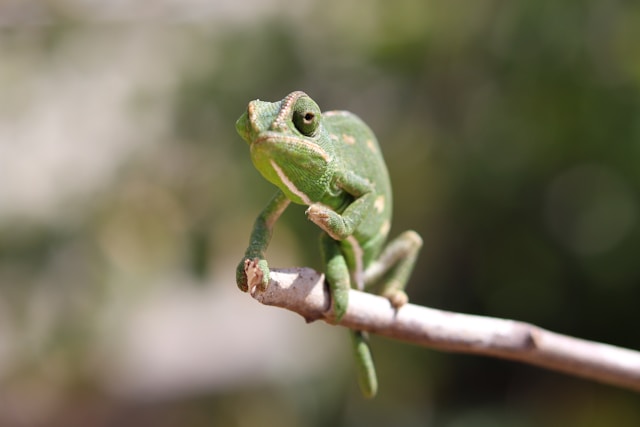Unbelievable Facts About Svalbard You Should Know Before Visiting

Unsplash: Dylan Shaw
What if I told you that the closest place to the North Pole is a town where about a little less than 3,000 people live… and that there are more registered snowmobiles in the area than the residents themselves. Would you believe me? The former sounds more believable. But the latter sounds like fiction because how could there be more snowmobiles than people? Perhaps, the math doesn’t add up right there. Well, before you scratch your head even more, let’s just get to the bottom of this.
Way up north like up, up north is a Norwegian archipelago in the Arctic Ocean called Svalbard. This arctic town has a population of less than 3,000; to be specific, there are 2,926 Svalbard residents, according to WorldData.info. Interestingly, there are actually more snowmobiles than the number of people in this area, because snowmobiles are an important mode of transportation for people to traverse Svalbard’s icy, icy roads. Despite its northernmost location, Svalbard is open for anyone to visit. The place is a magical wonderland full of nature-based and seasonal experiences that will leave you breathless and wanting more. But what else do you know about this North Polet? Read on and find out!
P.S. – As you prepare for your arctic adventure all over this cold town, make sure to read up on its regulations and requirements so that you can have the easy, breezy, majestic Svalbard adventure that you truly deserve.
- You’re legally required to carry a gun outside the settlements. Since hungry polar bears have been known to attack humans, a 2012 rule in Svalbard mandates that anyone traveling outside of the settlements must carry a firearm. However, it is illegal to use firearms in public places; some public buildings even have signs saying "no firearms permitted" on their front doors.
- The sun doesn’t set in the area for the entire summer. From April 19th to August 3rd, the sun never sets in Svalbard. This natural phenomenon is also known as the Midnight sun. At Midnight Sun, people can participate in midnight sun excursions that include whale viewing, wilderness exploration, midnight golf, sea kayaking, and many other activities.
- The sun doesn’t rise in the area during winter. In Svalbard, the sun never rises around mid-November to late-January. This dark winter season is known as the Polar Night. During this period, it is more possible for people to see the northern lights in the middle of the day, if the sky is clear.
- The four northernmost research communities are in Svalbard. There are four research communities in Svalbard: Longyearbyen, Hornsund, Ny-Ålesund, and Barentsburg.
The first major settlement of Svalbard and the largest is Longyearbyen. The Norwegian Polar Institute and the University Center in Svalbard (UNIS), two of Svalbard's most notable research organizations, have offices here together with a few other international research institutions.
In Hornsund, 8 to 10 regular staff are employed during a complete year, and they are all administered by the Institute of Geophysics, Polish Academy of Sciences, which is located in Warsaw, Poland.
The area with the most international research community is located at Ny-Ålesund Research Station, where scientists from ten different countries have set up permanent study settlements.
The community in Barentsburg is managed by the Russian coal mining company Trust Arcticugol. Additionally, several research projects affiliated with the Russian Academy of Sciences and the Federal Service for Hydrometeorology and Environmental Monitoring in Russia carry out their research close by. - Longyearbyen is the closest town to the North Pole. Longyearbyen is on the island of Spitsbergen with around 2,400 citizens. The settlement is the closest to the North Pole at a distance of about 818 miles or 1,316 kilometers.
- The Doomsday Vault is in Svalbard. The Seed Vault opened in 2008, and it houses about 1,214,827 seed samples from essentially almost every country on Earth. The global seed samples are placed inside sealed boxes and stored on shelves in the vault, with a temperature of -18º Celsius or -0.4º Fahrenheit.
- Svalbard is a visa-free zone. Neither a special visa nor a residence permit is required to live, work, and stay in Svalbard. Svalbard citizenship is nonexistent as well; however, Norwegian citizenship laws do apply in the archipelago.
- There are more than 2,100 glaciers in Svalbard. Glaciers found in Svalbard are around 3,000 to 4,000 years old and these glaciers cover about 59% of the total area.
- There are no trees in Svalbard. With its frozen tundra and long, dark winters, trees can't grow in this northernmost archipelago. However, algae, mosses, and lichens do grow in ice-free areas. Interestingly, there are 164 plants recorded in Svalbard.
- Cats are not allowed in Svalbard. Svalbard residents are not allowed to bring any cats with them, as cats are forbidden on the island. The reason for this is: cats are invasive animals and they could do serious damage to the local fauna and wildlife. As a result, a “no cats” law was developed to assure the protection of the ecosystem in Svalbard.


